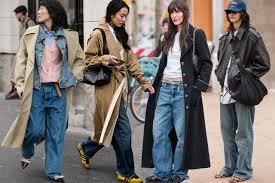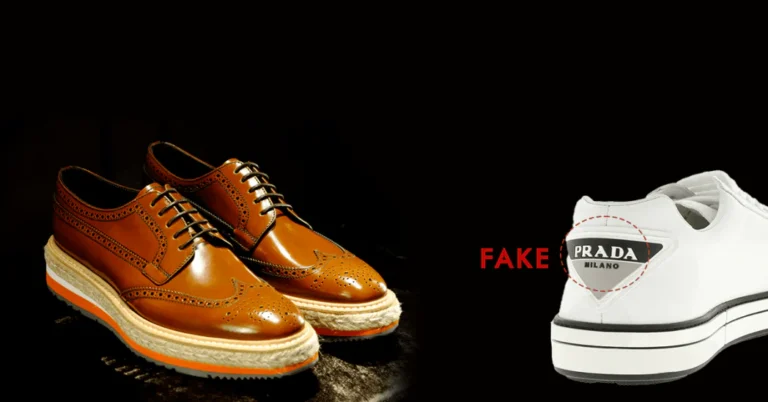
baggy clothes style
The world of fashion has seen countless transformations, yet the baggy clothes style remains one of the most distinctive and long-lasting trends. Unlike fitted garments that follow body lines closely, baggy clothing provides extra space, movement, and comfort. This style has been embraced across different cultures, age groups, and subcultures, making it not just a passing phase but a significant fashion statement. Baggy clothes are more than oversized garments; they represent identity, rebellion, self-expression, and sometimes even social commentary. The popularity of this style rises and falls in cycles, yet it always finds its way back into mainstream fashion, reinvented for new generations.
The Origins of Baggy Clothes
Baggy clothing traces its history back to multiple influences. In some cultures, loose garments were the norm for practicality and comfort. For example, traditional Asian attire often emphasized flowing silhouettes, while Middle Eastern garments like the abaya or thobe leaned heavily on comfort and modesty. However, the Western fashion interpretation of baggy clothes developed more distinctly in the 20th century. During the 1920s and 1930s, wide-legged trousers became a common part of men’s wardrobes. Later, in the 1980s and 1990s, baggy clothes surged as a symbol of streetwear and hip-hop culture, embedding themselves firmly into fashion history.
Baggy Clothes and Hip-Hop Influence
One cannot discuss baggy clothing without acknowledging its deep connection to hip-hop culture. Originating in the Bronx in the late 1970s, hip-hop was more than music; it was a lifestyle, including breakdancing, graffiti art, and unique dressing. Oversized pants, loose t-shirts, and hoodies became part of the visual identity of the movement. The baggy look represented freedom, defiance against mainstream norms, and unity among communities. Major hip-hop artists showcased oversized attire, inspiring youth worldwide to adopt the style. Baggy jeans and shirts became symbols of individuality and resistance, bridging music and fashion into one cohesive cultural expression.
Baggy Clothes in the 1990s and 2000s
The 1990s are often remembered as the golden age of baggy clothes. Urban fashion brands and sportswear companies capitalized on this trend, releasing collections that resonated with youth culture. Denim brands offered extra-wide leg jeans, while sportswear companies provided oversized sweatshirts and tracksuits. Skateboarding culture also added fuel to this movement, with skaters preferring baggy pants for both style and practicality. The 2000s carried this legacy forward, although fashion slowly shifted toward slimmer silhouettes in the late 2000s. Yet, baggy clothing never disappeared completely; it lived on in underground circles and resurfaced through retro-inspired collections.
Baggy Clothes in Modern Fashion
Today, baggy clothes have returned to the mainstream with a modern twist. Luxury brands, streetwear labels, and fast-fashion companies all incorporate oversized garments into their collections. Unlike earlier eras when baggy clothing was associated mostly with rebellion, today it’s considered a versatile fashion choice. Designers mix loose silhouettes with tailored elements, creating a refined version of the look. Celebrities, models, and influencers promote baggy outfits on runways, red carpets, and social media platforms. Whether it’s oversized blazers, extra-wide jeans, or roomy hoodies, baggy clothes have proven their timeless adaptability.
Why People Choose Baggy Clothes
The popularity of baggy clothing can be explained by several reasons. First and foremost is comfort. Loose-fitting garments allow better airflow, movement, and a relaxed feeling compared to restrictive clothing. Another factor is self-expression. People often choose baggy outfits to reflect their personality, lifestyle, or even a sense of rebellion against conventional norms. Additionally, baggy clothing provides versatility, as it suits casual, athletic, and even semi-formal occasions when styled correctly. Some also choose it for modesty, as baggy clothes conceal body shapes more effectively than fitted garments.
Baggy Clothes and Gender-Neutral Fashion
Another important aspect of baggy style is its connection to gender-neutral fashion. Oversized clothing blurs the lines between traditional male and female wardrobes. A loose hoodie, for example, can be worn by anyone, regardless of gender. This inclusivity makes baggy clothes particularly relevant in today’s cultural climate, where gender-fluid and unisex fashion are gaining recognition. Baggy outfits allow individuals to dress freely without being restricted by outdated gender rules, making them both progressive and stylish.
Styling Baggy Clothes for Everyday Wear
Baggy clothes can be incredibly stylish if worn correctly. The key lies in balancing proportions. Pairing oversized jeans with a fitted top, or wearing a loose t-shirt with slim pants, creates visual harmony. Accessories such as belts, sneakers, and layered jewelry add definition to baggy outfits. Footwear choices are especially important—chunky sneakers, boots, or even sandals can elevate a simple oversized look. Another way to style baggy clothes is through layering. A long coat over an oversized hoodie, combined with loose trousers, creates a bold streetwear look. Baggy clothes are also versatile enough to adapt to seasonal trends; lightweight oversized shirts are perfect for summer, while thick hoodies and coats work best in winter.
Baggy Clothes in Pop Culture
Pop culture has played a massive role in promoting baggy style. From music videos to television shows, baggy clothing has appeared everywhere as a symbol of youth culture and rebellion. Famous icons such as hip-hop artists, skaters, and even athletes have popularized oversized outfits. In recent years, fashion-forward celebrities have reintroduced baggy styles on global stages, showing that this trend is not bound to a particular decade. Today, platforms like Instagram and TikTok amplify this resurgence, with influencers styling baggy clothes in innovative ways. The digital age ensures that fashion trends spread faster and wider than ever before.
Baggy Clothes and Sustainability
Interestingly, baggy clothes can also contribute to conversations about sustainability. Oversized garments often have a longer lifespan because they fit more loosely, accommodating body changes over time. Thrift shopping and vintage stores are filled with baggy clothing from previous decades, making them eco-friendly choices. Consumers are now more conscious about sustainable fashion, and baggy clothes fit perfectly into this narrative. By reusing, recycling, and upcycling oversized garments, fashion enthusiasts can embrace both style and environmental responsibility.
Baggy Clothes in Professional Settings
While baggy clothes are mostly associated with casual and streetwear looks, they are slowly finding acceptance in professional spaces. Oversized blazers, wide-leg trousers, and relaxed-fit shirts are increasingly featured in workplace attire. The blending of formal and casual fashion, often referred to as business-casual or smart-casual, creates opportunities for baggy clothes to fit seamlessly. Designers now craft tailored oversized suits that project authority while maintaining comfort. This shift demonstrates that baggy clothing is not limited to leisurewear but can also be adapted for sophisticated environments.
Challenges of Wearing Baggy Clothes
Despite its popularity, styling baggy clothing comes with challenges. An outfit that is too oversized may appear sloppy rather than stylish. Achieving balance requires careful selection of sizes, accessories, and complementary pieces. Another challenge is perception; in some cultures, baggy clothes may still carry stereotypes linked to delinquency or rebellion. Overcoming these perceptions requires educating people on the versatility and evolution of baggy fashion. Choosing high-quality fabrics and structured oversized pieces can also help elevate the look, making it chic instead of careless.
Baggy Clothes in Global Perspective
Different parts of the world interpret baggy fashion uniquely. In Japan, for instance, oversized streetwear is often styled with a minimalist aesthetic, emphasizing neutral tones and layered looks. In the United States, baggy clothing continues to draw heavily from hip-hop and skateboarding roots. Meanwhile, in Europe, baggy clothes are incorporated into high-fashion collections, blending urban culture with luxury. This global diversity shows that baggy clothing is not a monolithic style but a versatile trend shaped by cultural context and personal creativity.
Baggy Clothes for the Future
Fashion is cyclical, and baggy clothing has proven its resilience through multiple revivals. Looking ahead, baggy clothes are likely to remain a cornerstone of both streetwear and high fashion. With increasing demand for comfort, inclusivity, and sustainability, oversized fashion aligns perfectly with future trends. Designers are expected to experiment more with fabrics, cuts, and layering techniques, keeping the style fresh and exciting. Consumers will continue to blend vintage inspirations with contemporary designs, ensuring that baggy clothes remain relevant for generations to come.
Conclusion
The baggy clothes style is more than just a fashion trend; it is a cultural movement that has evolved over decades. From its roots in hip-hop and skateboarding to its resurgence in modern fashion, baggy clothing represents comfort, freedom, inclusivity, and creativity. While challenges exist in styling and perception, the widespread popularity of oversized fashion proves its staying power. Whether chosen for aesthetics, modesty, or sustainability, baggy clothes continue to inspire and redefine how people dress. For anyone looking to embrace both comfort and style, adopting elements of baggy fashion is a timeless choice.
For further reading on streetwear fashion trends, you can visit Highsnobiety and to explore sustainable styling ideas, check out Good On You.






